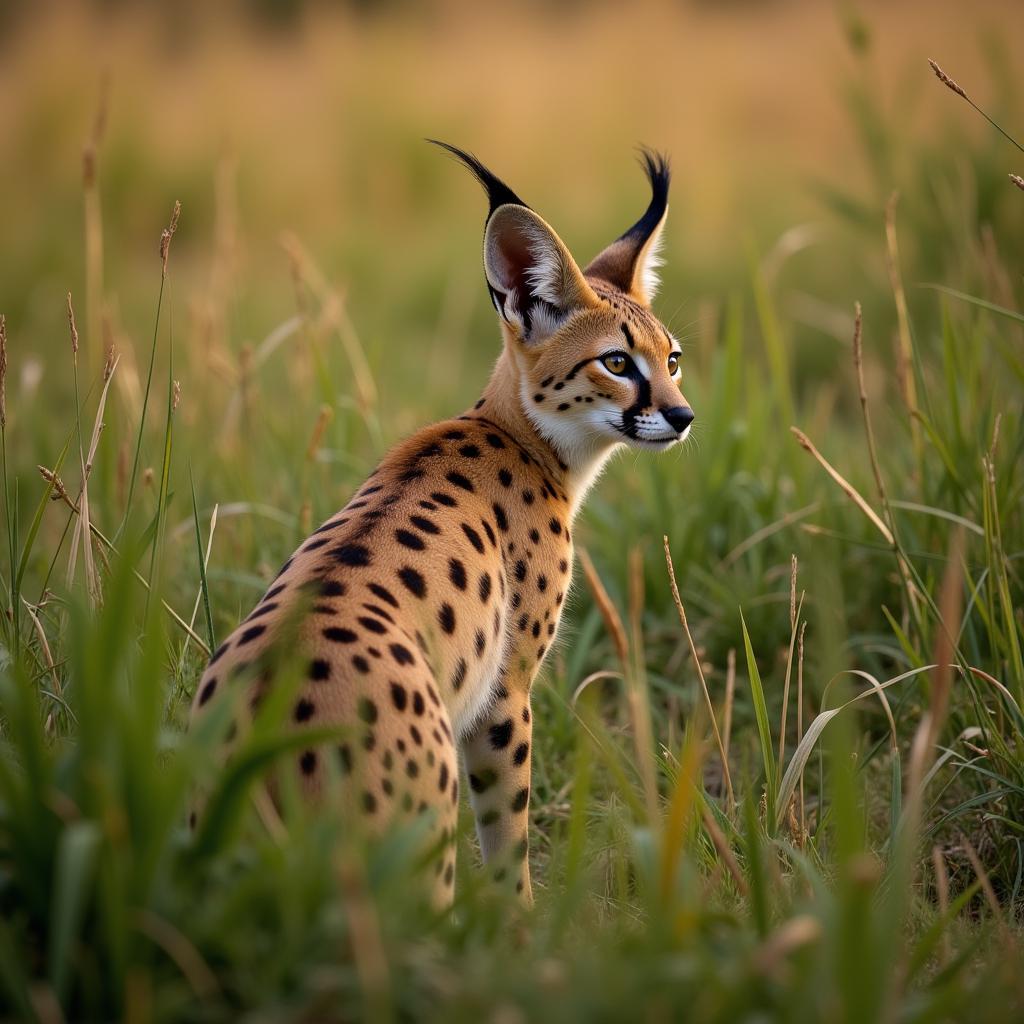Majestic African Cat with Big Ears: Unveiling the Serval
Known for their striking appearance and impressive agility, the serval is an African cat instantly recognizable by its exceptionally large ears. These fascinating creatures, scientifically known as Leptailurus serval, roam the savannas and grasslands of sub-Saharan Africa, captivating with their beauty and eluding predators with their remarkable skills.
The Serval’s Acoustic Advantage: Why So Big?
The serval’s most defining feature, its oversized ears, aren’t just for show. These auditory appendages, proportionally larger than any other cat, serve a crucial purpose in the wild. Acting like finely tuned satellite dishes, their ears allow them to detect even the faintest rustle of prey hiding in tall grasses. This exceptional hearing plays a vital role in their hunting success, giving them an edge in the competitive African ecosystem.
 Serval using its large ears to locate prey
Serval using its large ears to locate prey
A Coat of Many Spots: Camouflage and Individuality
Beyond their prominent ears, servals boast a stunning coat pattern that sets them apart. Their golden-yellow fur is adorned with an array of black spots and stripes, creating a unique camouflage that blends seamlessly with their grassy habitat. Interestingly, no two servals share the exact same pattern, much like human fingerprints. This individualistic marking adds to their mystique and allows researchers to identify individuals in the wild.
A Hunter of the Night: Prowess and Precision
Servals are primarily nocturnal hunters, venturing out under the cover of darkness to stalk their prey. Their long legs give them an impressive vertical leap, allowing them to pounce on unsuspecting victims with astonishing precision. Their diet mainly consists of rodents, birds, reptiles, and insects, effectively keeping populations of these animals in check.
 Serval executing a high jump to catch a bird
Serval executing a high jump to catch a bird
The Serval’s Place in African Culture and Conservation
In many African cultures, the serval holds a special significance. They are often viewed as symbols of agility, cunning, and grace. Sadly, habitat loss and the illegal pet trade pose significant threats to serval populations. Conservation efforts are underway to protect these magnificent creatures and ensure their survival for generations to come.
Serval FAQs
Q: Where do servals live?
A: Servals are found in sub-Saharan Africa, inhabiting grasslands, savannas, and areas with tall vegetation.
Q: What do servals eat?
A: Their diet mainly consists of rodents, birds, reptiles, and insects.
Q: How high can a serval jump?
A: Servals can jump up to 10 feet in the air to catch their prey.
Q: Are servals endangered?
A: While not currently endangered, serval populations are threatened by habitat loss and the illegal pet trade.
Q: What is being done to protect servals?
A: Conservation organizations are working to protect serval habitat and raise awareness about the illegal pet trade.
Interested in learning more about African wildlife? Check out our articles on African canines and the challenges faced by the African grey endangered parrot.
For stunning visuals of the African continent, explore our collection of East African countries map and add a touch of the wild to your home with our beautiful African animal wall stickers.
For any inquiries or assistance, feel free to reach out to us at +255768904061 or [email protected]. You can also visit our office located at Mbarali DC Mawindi, Kangaga, Tanzania. Our customer service team is available 24/7 to assist you.
